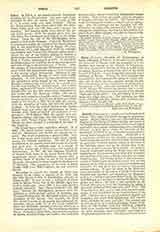

Corinth (CORINTHUS), a titular archiepiscopal see of Greece. The origin of Corinth belongs to prehistoric legend. About 1100 B.C. this city, delivered from the Argives by the Dorian invasion, became the center of the Heracleid rule in Peloponnesus; at this time it waged successful wars against neighboring cities, including Athens. A little later, under the tyranny of the Bacchiadae (750-657 B.C.), it founded many colonies, among them Corcyra and Syracuse. About 657 B.C. a revolution substituted for tyranny a government based on popular election; from that time Corinth took no great part in Greek history, except as the scene of the Isthmian games and by the transit duty it imposed on all goods passing by its citadel. Its name is scarcely mentioned during the Medic wars, and after beginning the Peloponnesian war (432-404) it handed the direction of it over to Sparta and later on abandoned its ally. The foreign policy of this submissive vassal of Philip (later the federal center, but not the inspirer, of the Achaean league) was never positive and domestic; its true glory was its luxury, riches, and artistic culture. It gave its name to the third and most ornamental of the orders of Greek architecture. Corinth was captured and plundered by Mummius (146 B.C.), restored and embellished again by Caesar and Hadrian, and ravaged in turn by the Heruli, Visigoths, and Slays. In 1205 it was captured by the French, who gave it up to the Venetians, by whom it was held, excepting brief intervals, until 1715. The Turks left it in 1821, and in 1858, after a severe earth-quake, it was transferred to the western shore of the gulf. The new town, in the provinces of Argolis and Corinthia, has about 4500 inhabitants, and exports dried currants, oil, corn, and silk. The ancient site is now occupied by a wretched village, Palaeo-Corinthos, or Old Corinth, with five churches, probably built where temples had formerly stood. Near by are the lofty Acropolis (Acro-Corinthus) and ruins of a temple and amphitheatre. The ship canal between the bay of Corinth and the gulf of Aegina, about four miles in length, was opened November 8, 1893; it had been begun by Nero, and is in great part cut through the solid rock.
St. Paul preached successfully at Corinth, where he lived in the house of Aquila and Priscilla (Acts, xviii, 1), where Silas and Timothy soon joined him. After his departure he was replaced by Apollo, who had been sent from Ephesus by Priscilla. The Apostle visited Corinth at least once more. He wrote to the Corinthians in 57 from Ephesus, and then from Macedonia in the same year, or in 58. The famous letter of St. Clement of Rome to the Corinthian church (about 96) exhibits the earliest evidence concerning the ecclesiastical primacy of the Roman Church. Besides St. Apollo, Lequien (II, 155) mentions forty-three bishops: among them, St. Sosthenes (?), the disciple of St. Paul. St. Dionysius; Paul, brother of St. Peter, Bishop of Argos in the tenth century; St. Athanasius, in the same century; George, or Gregory, a commentator of liturgical hymns. Corinth was the metropolis of all Hellas. After the Byzantine emperors had violently withdrawn Illyricum from papal direction, Corinth appears as a metropolis with seven suffragan sees; at the beginning of the eighteenth century there were only two united in one title. Since 1890 Corinth, for the Greeks, has been a simple bishopric, but the first in rank, Athens being the sole archbishopric of the Kingdom of Greece. Lequien (III, 883) mentions twenty Latin prelates from 1210 to 1700, the later ones being only titular. But Eubel (I, 218; II, 152) mentions twenty-two archbishops for the period from 1212 to 1476.
S. PETRIDES

